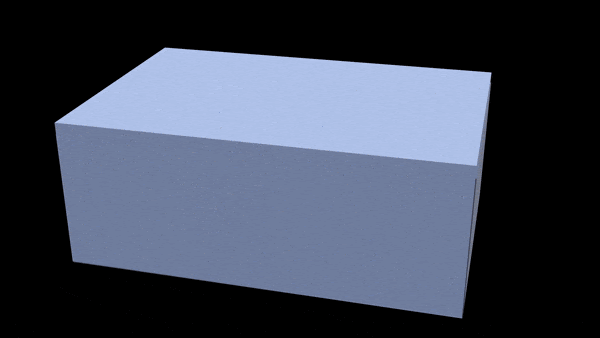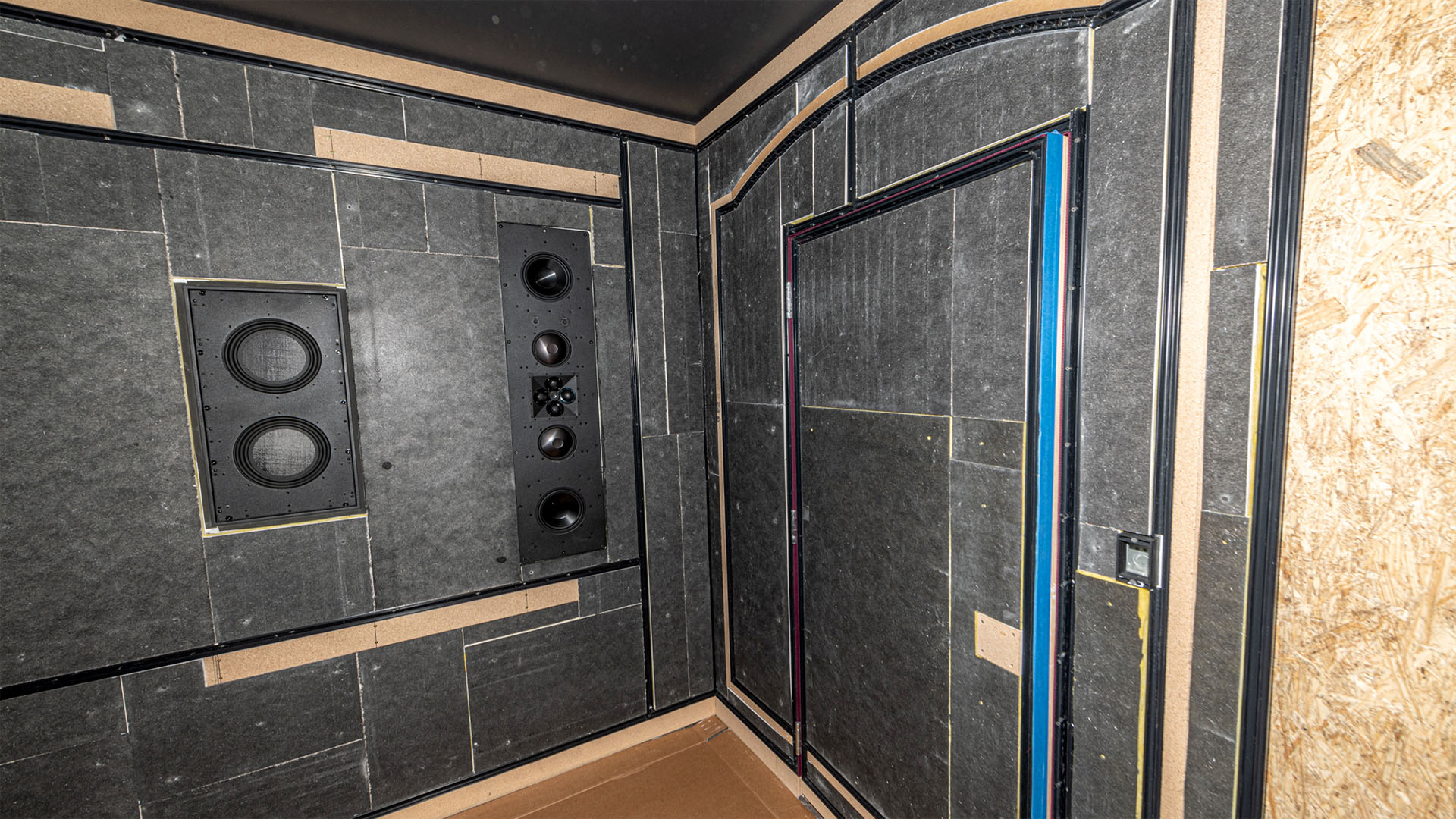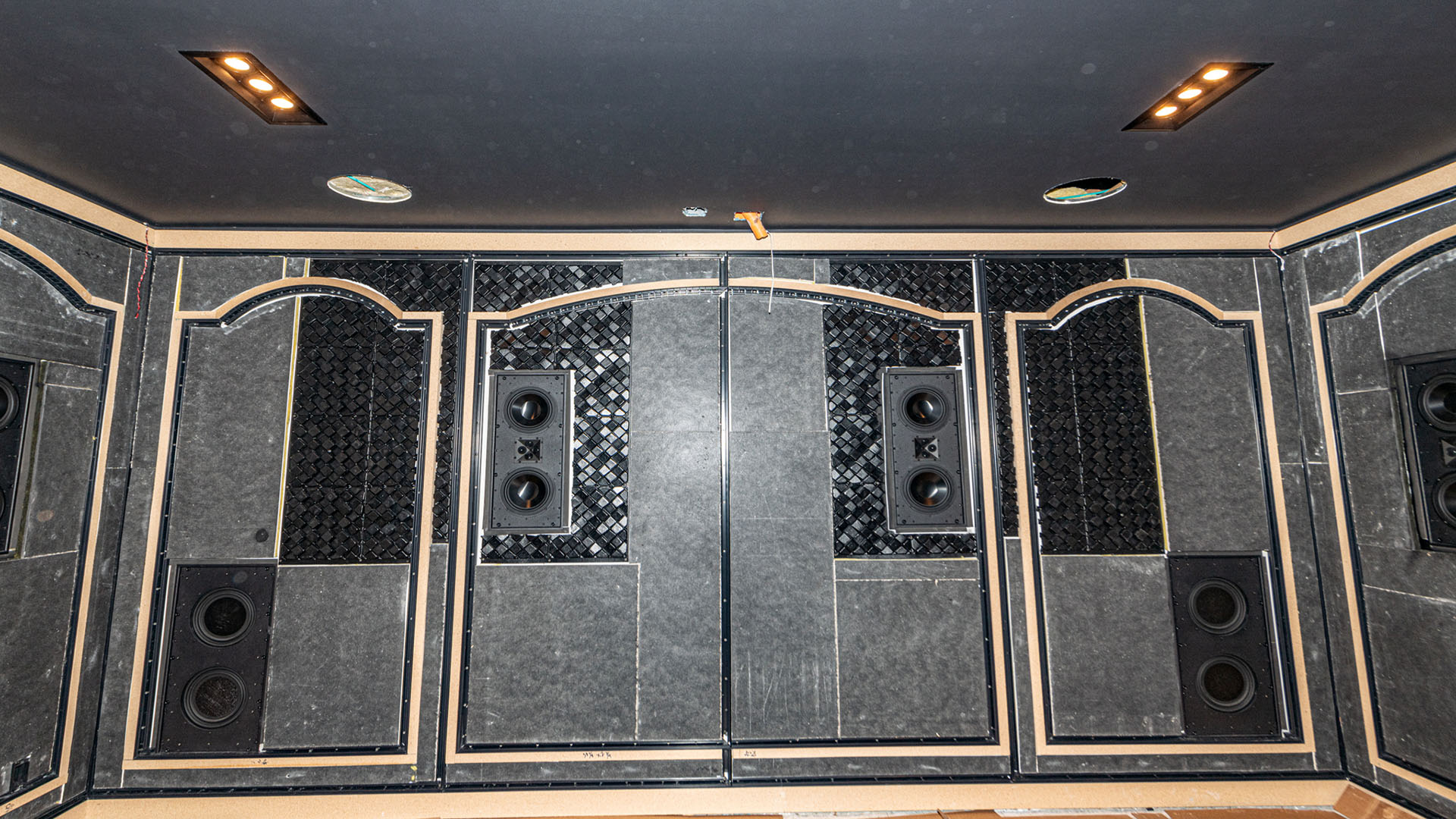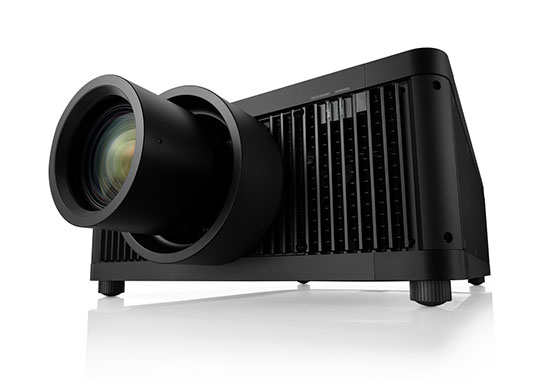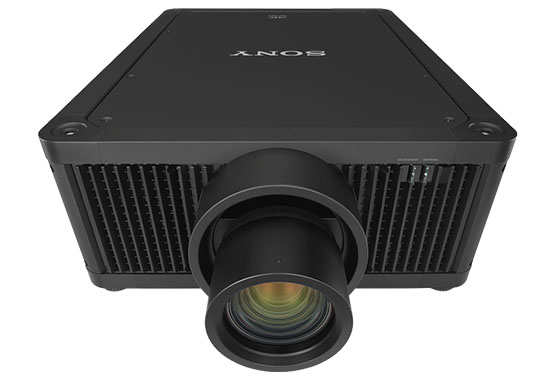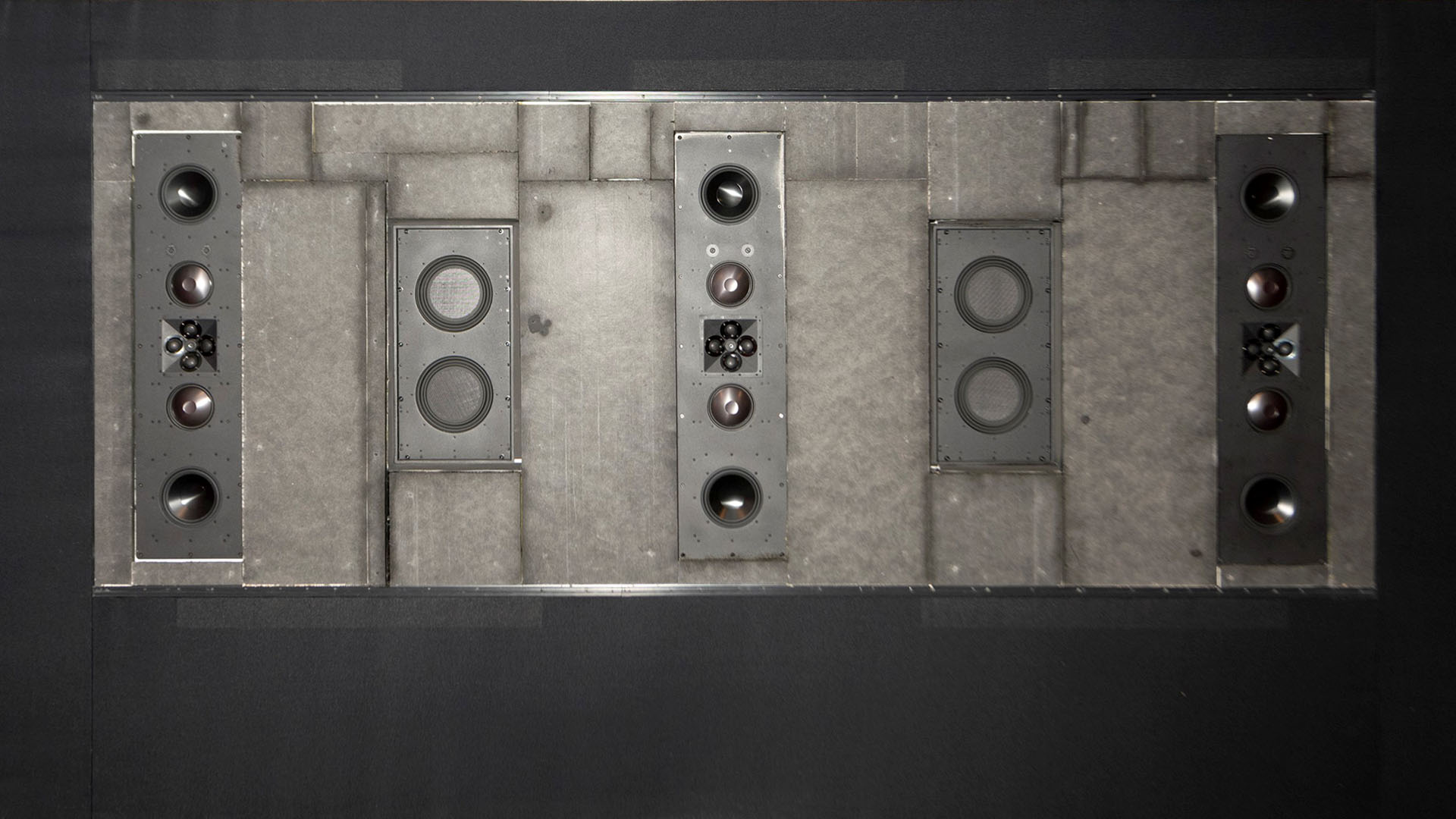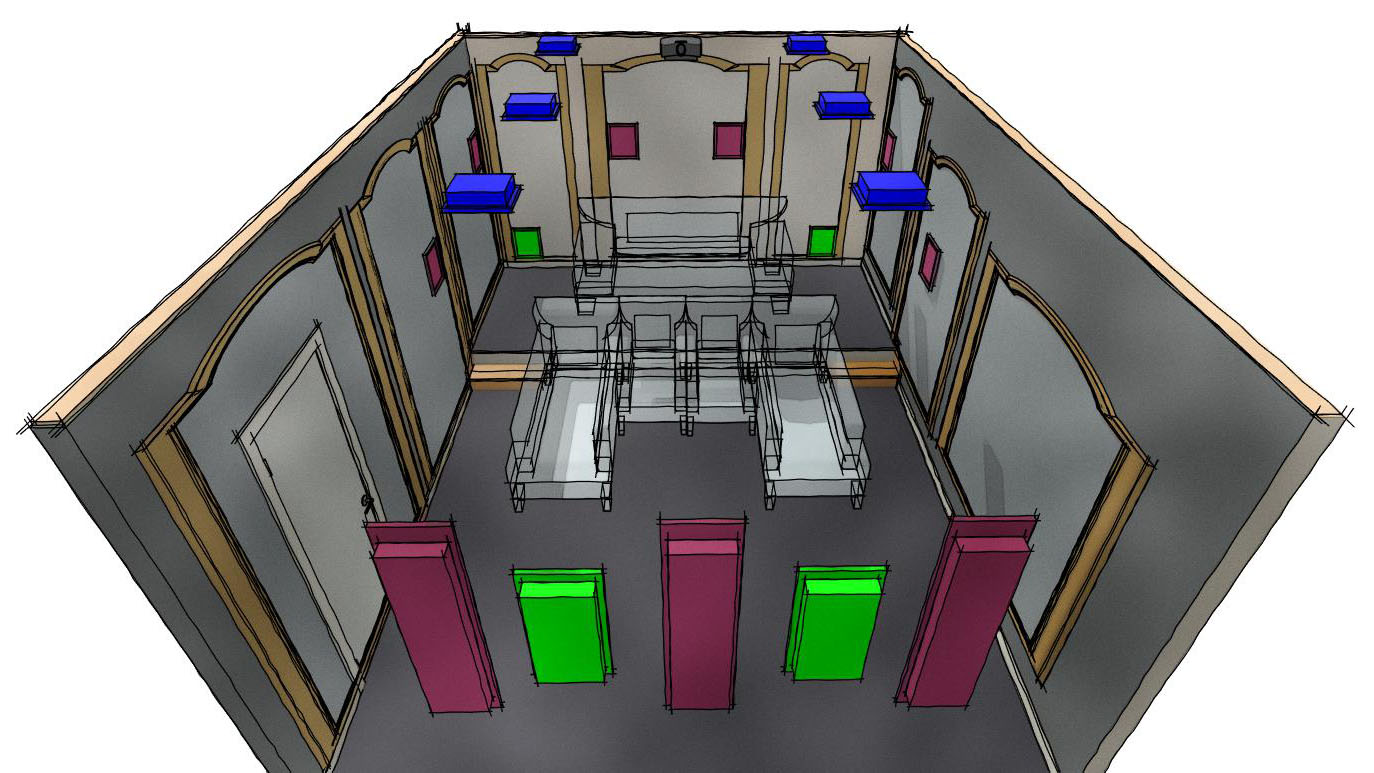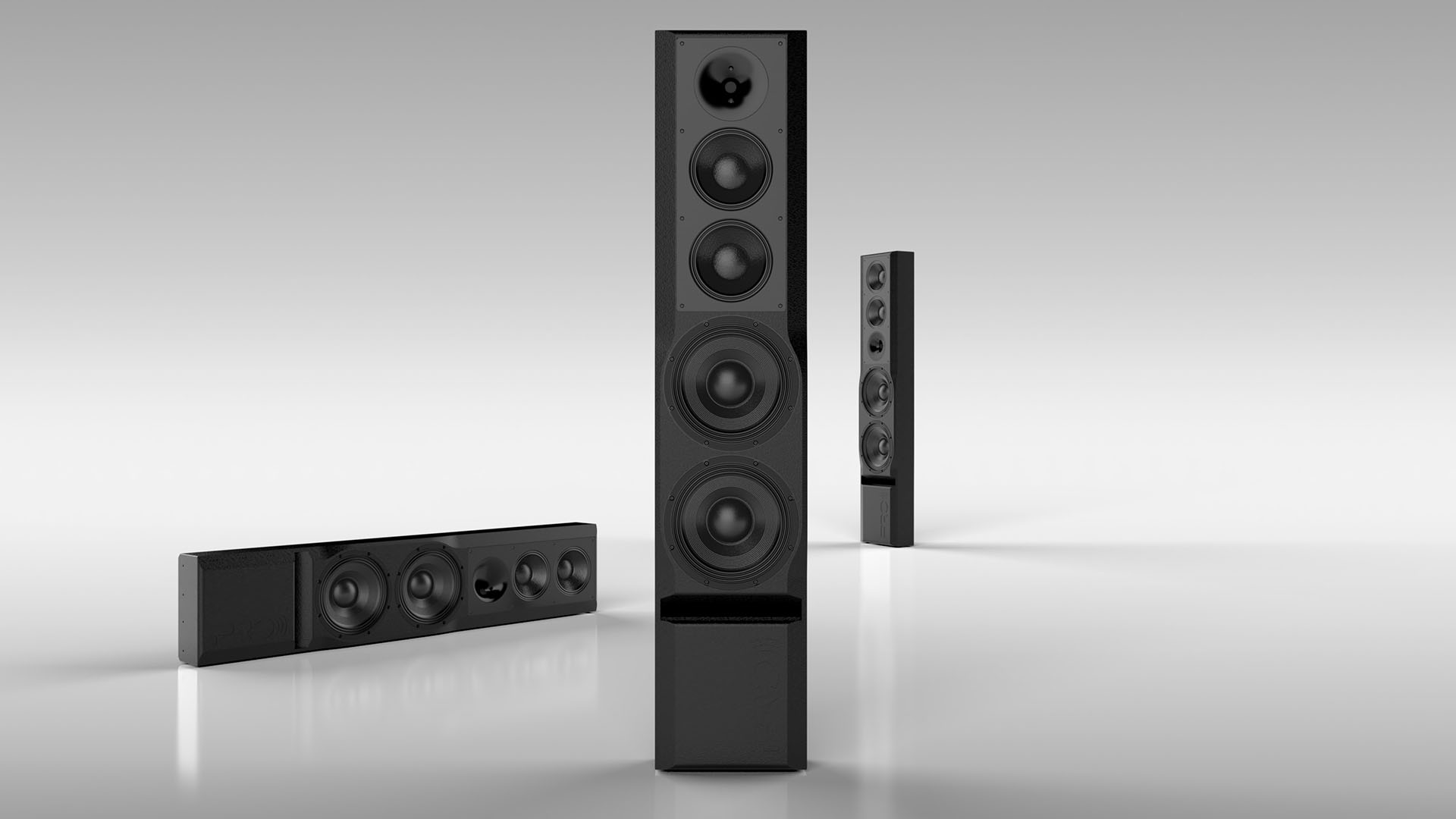The Cinematic Experience
Acoustic Room Design
In our experience, not specifying acoustics properly in a dedicated theater room is easily the single biggest “miss” perpetrated by 90% or more of the residential theaters being built, and that can become a very big miss.
Most people don’t understand that there are actually two very separate elements which are both crucial to the structural design and functionality of the room, and too often they become intermixed and confused with one another.
Sound Isolation
Sound Isolation is the first element, which in layman’s terms is what most people would describe as soundproofing a room. This is pure structural engineering, and is focused on making all of the structural elements in the room as rigid as possible. We describe this part of the process as building the room from the outside in, such that we decouple the theater room from the rest of the house, in order to isolate any possibility of sound or vibration transfer to other areas in the home. We like to use the analogy of creating an exoskeleton around the room, and then creating the actual theater space inside of the exoskeleton. It is truly a room-within-a-room.
Everything about this phase of the project is unique to building these types of rooms, and it is the responsibility of the theater designer to comprehensively understand these construction nuances, completely aside from the electronics side of the project. We use the expression “screwed, glued, nailed and bolted” when describing our approach to achieving maximum structural rigidity. After all, we’re not building laundry rooms. During the duration of a construction project of this sort, there are many things that can be tweaked along the way, but this is definitely not one of those. We call this “Defining the Room.” How are we going to build it?
Sound Isolation is the first element, which in layman’s terms is what most people would describe as soundproofing a room. This is pure structural engineering, and is focused on making all of the structural elements in the room as rigid as possible. We describe this part of the process as building the room from the outside in, such that we decouple the theater room from the rest of the house, in order to isolate any possibility of sound or vibration transfer to other areas in the home. We like to use the analogy of creating an exoskeleton around the room, and then creating the actual theater space inside of the exoskeleton. It is truly a room-within-a-room.
Everything about this phase of the project is unique to building these types of rooms, and it is the responsibility of the theater designer to comprehensively understand these construction nuances, completely aside from the electronics side of the project. We use the expression “screwed, glued, nailed and bolted” when describing our approach to achieving maximum structural rigidity. After all, we’re not building laundry rooms. During the duration of a construction project of this sort, there are many things that can be tweaked along the way, but this is definitely not one of those. We call this “Defining the Room.” How are we going to build it?
Room Acoustic Treatment
This is what goes on inside of the room, to manage the quality and clarity of what is certainly going to be a high-powered, many-channeled cinematic sound system.
We’ve all been in media rooms or theater rooms where as the volume increases, the listening experience becomes more uncomfortable. We commonly refer to this as distortion (which it is), and it hurts our ears. There is generally a cascade of reasons why this distortion is created, but none more so than the all but complete lack of proper acoustic treatment, if any acoustic treatment at all.
This is our secret sauce. Our sound is our signature. How loud any customer wants to play their system is completely a question of personal choice, and in some cases tolerance. We give our customers all the power they need to enjoy their systems at high output levels (very high), while maintaining a pristine, crystal clear, magnificently detailed soundtrack reproduction. The acoustic system we use is proprietary to our partner, and our research and experience informs us that it is the finest product in the category. We tune our rooms like a musical instrument, with literally every inch given consideration to what the sound waves in the room are doing, and where they are going.
It is in this area, the real science of a highly engineered acoustic system, where we easily have the greatest ability to exceed the capabilities of anything the commercial cinema can include in the design of their “rooms.” This is a level of sound reproduction mastery that most people don’t even know exists, until they hear it.
Both of these elements, sound isolation and room acoustic treatment add many additional man hours to the project, as well as the cost of highly specialized materials. Most customers are not prepared for what these elements can add to the cost of their project, which could easily become 25-30% of the overall cost. In our opinion, if these elements are not included and constructed properly, everything else that comes behind it in the process will be compromised to some extent.
Epic Visuals
Projector and Screen
We’ve already introduced the magic of 4K and how amazing the current and future breeds of 4K laser projectors are. By our definition, any room which we would build as a dedicated theater room will always have a projector and screen for the video side of the system. Never a flat panel, ever, no matter how large.
Firstly, with a screen we can create images which are exponentially larger than the largest flat panel.
Secondly, the image achieved with a quality projector and screen has so much more depth to it than a flat panel. It is a function of being front lit, rather than back lit. The image recreation is so much more natural, so film like.
Epic Visuals
Projector and Screen
We’ve already introduced the magic of 4K and how amazing the current and future breeds of 4K laser projectors are. By our definition, any room which we would build as a dedicated theater room will always have a projector and screen for the video side of the system. Never a flat panel, ever, no matter how large.
Firstly, with a screen we can create images which are exponentially larger than the largest flat panel.
Secondly, the image achieved with a quality projector and screen has so much more depth to it than a flat panel. It is a function of being front lit, rather than back lit. The image recreation is so much more natural, so film like.


Projectors
If we review the current line-up of Sony 4K projectors, they have five different 4K projectors ranging in price from just under $10,000 to just under $100,00. There are any number of different technical elements which differentiate the product lineup, from lens quality to electronic signal processing capabilities, but the most frequent aspect of comparison is light output. In the simplest of terms, the bigger the screen, or the bigger the room (typically both), the greater the light output requirements for the projector, for its ability to make an image truly jump off the screen. Sony’s flagship projector, the GTZ-380 is a true light cannon, with an enormous light output of 10,000 lumens. This projector requires its own dedicated 220 volt circuit, and dealers are required to have a special FDA certification, for the understanding of how to physically position this projector in a room so as to minimize direct visual exposure to its laser powered light engine, which could literally be blinding.
This level of projector capability is another significant example of the greater performance capabilities we have in the residential cinema. The number of commercial theaters offering 4K reproduction is a small percentage of the overall number of screens in the industry. By comparison, AEG has not installed anything but 4K projectors since 2016. Every time we go to a commercial theater, we always observe a substantial difference in screen image brightness from what we are accustomed to enjoying in the rooms we create.
Acoustically Transparent Screens:
The Importance of Proper Center Channel Speaker Placement
The reason we use acoustically transparent screens is entirely a function of creating the most realistic sound stage we possibly can. Maximizing dialogue clarity is the single most important element in mastering every movie soundtrack. As the source of that dialogue, there is widespread agreement within the film and theater creation industries that no less than 70% of dialogue information originates from the center channel in the speaker array. The next time you’re watching anything, please observe that the mouth of the primary actor/performer, etc. will always be within five percent or thereabouts of being perfectly centered on the screen, any time that they are speaking, singing, screaming or any other sort of verbal communication. This is no more or less true on a 32” TV than it is on a 165” projection screen. It is simply how content is produced. As such, it makes an immeasurably crucial impact on dialogue clarity when we can place the speaker delivering the dialogue precisely behind the location of the image of the mouth of the character who is speaking. This is really for all the marbles, because any design other than this will be substandard, and the person building the theater should not be in this business.
It is a function of this importance of the proper placement of the center channel speaker that creates the need for acoustically transparent screens. The secret is in the material that is used for the screen itself, and there are two types of materials that are typically used for this application.
One is called a “perf” screen, as it is made from a vinyl screen that has hundreds of pinhead-tiny perforations in the vinyl, and it is through these perforations that the front end of the surround array can pass its sound information through the screen.
The other type of screen material that is used in acoustically transparent screens is what is called a “woven” screen. This is actually made out of cloth, which is all but completely transparent, sound-wise, and yet still able to reflect projector light from its front side. The studios which conduct the final mastering process on all movies are called post production studios. This is where the absolute purest reproduction takes place. This is where the final cut is created, with the Director, Producer and Sound Engineers all gathered in the same room, going over every single second of the film. These post production studios are highly specialized, and those that are built to the caliber to be certified to do the final mastering on Dolby Atmos movies are surely the very finest performing rooms for the creation (and recreation) of the cinematic experience. There’s no source that says what screen material is preferred in these rooms, but it’s well known within the business that the woven screen is absolutely the industry standard, and AEG follows that lead.
The reason we use acoustically transparent screens is entirely a function of creating the most realistic sound stage we possibly can. Maximizing dialogue clarity is the single most important element in mastering every movie soundtrack. As the source of that dialogue, there is widespread agreement within the film and theater creation industries that no less than 70% of dialogue information originates from the center channel in the speaker array. The next time you’re watching anything, please observe that the mouth of the primary actor/performer, etc. will always be within five percent or thereabouts of being perfectly centered on the screen, any time that they are speaking, singing, screaming or any other sort of verbal communication. This is no more or less true on a 32” TV than it is on a 165” projection screen. It is simply how content is produced. As such, it makes an immeasurably crucial impact on dialogue clarity when we can place the speaker delivering the dialogue precisely behind the location of the image of the mouth of the character who is speaking. This is really for all the marbles, because any design other than this will be substandard, and the person building the theater should not be in this business.
It is a function of this importance of the proper placement of the center channel speaker that creates the need for acoustically transparent screens. The secret is in the material that is used for the screen itself, and there are two types of materials that are typically used for this application.
One is called a “perf” screen, as it is made from a vinyl screen that has hundreds of pinhead-tiny perforations in the vinyl, and it is through these perforations that the front end of the surround array can pass its sound information through the screen.
The other type of screen material that is used in acoustically transparent screens is what is called a “woven” screen. This is actually made out of cloth, which is all but completely transparent, sound-wise, and yet still able to reflect projector light from its front side. The studios which conduct the final mastering process on all movies are called post production studios. This is where the absolute purest reproduction takes place. This is where the final cut is created, with the Director, Producer and Sound Engineers all gathered in the same room, going over every single second of the film. These post production studios are highly specialized, and those that are built to the caliber to be certified to do the final mastering on Dolby Atmos movies are surely the very finest performing rooms for the creation (and recreation) of the cinematic experience. There’s no source that says what screen material is preferred in these rooms, but it’s well known within the business that the woven screen is absolutely the industry standard, and AEG follows that lead.
Legendary Sound
The importance of what AEG does with sound is how we have built our reputation, and built a whole bunch of rooms with truly amazing sound. It really deserves to have its own dedicated section, entirely devoted to the nuances of spectacular sound, and it does. It comes right after this section.
That said, it still needs to be mentioned in this section, as it is one of the four pillars that defines our process. Our starting point is to define the specific configuration of the surround sound array. This is the whole 5.1 vs 9.2.6 or whatever we believe the highest performing, most logical array for the room will be. We never overbuild our rooms. We don’t try to force something into the configuration that doesn’t logically fit. In the same breath, we want to go as full force in the room as we possibly can, to provide the customer with the most satisfying sound performance that makes sense for the space. We rarely do a configuration of less than 7.2.6, with greater explanation to come on the subject.
Once we have determined the configuration, we work to find the best speaker for each application, with various price point options, starting with spectacular and progressing to truly sensational.
The importance of what AEG does with sound is how we have built our reputation, and built a whole bunch of rooms with truly amazing sound. It really deserves to have its own dedicated section, entirely devoted to the nuances of spectacular sound, and it does. It comes right after this section.
That said, it still needs to be mentioned in this section, as it is one of the four pillars that defines our process. Our starting point is to define the specific configuration of the surround sound array. This is the whole 5.1 vs 9.2.6 or whatever we believe the highest performing, most logical array for the room will be. We never overbuild our rooms. We don’t try to force something into the configuration that doesn’t logically fit. In the same breath, we want to go as full force in the room as we possibly can, to provide the customer with the most satisfying sound performance that makes sense for the space. We rarely do a configuration of less than 7.2.6, with greater explanation to come on the subject.
Once we have determined the configuration, we work to find the best speaker for each application, with various price point options, starting with spectacular and progressing to truly sensational.
Custom Seating
Just as so many people have never been in a theater room with a best-in-class acoustic system, so too is the case with luxury custom seating. Great seating can make an otherwise ordinary room (not built by AEG) so much better. Any truly fabulous dedicated theater room should consider it just as important to have high quality seating as they would want for a high quality projector, speakers, et al. Quality seating simply adds so much to the overall enjoyment of watching (sleeping through) a movie in your own home. You can always watch it again the next night, and the night after that…
